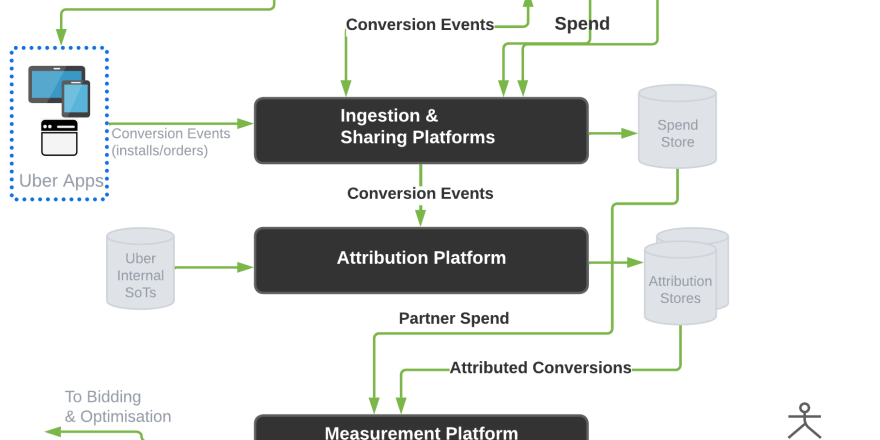[ad_1]
Today, we celebrate 10 years of Amazon Elastic Container Service (ECS) and its incredible journey of pushing the boundaries of what’s possible in the cloud! What began as a solution to streamline running Docker containers on Amazon Web Services (AWS) has evolved into a cornerstone technology, offering both impressive performance and operational simplicity, including a serverless option with AWS Fargate for seamless container orchestration.
Over the past decade, Amazon ECS has become a trusted solution for countless organizations, providing the reliability and performance that customers such as SmugMug rely on to power their operations without being bogged down by infrastructure challenges. As Andrew Shieh, Principal Engineer at SmugMug, shares, Amazon ECS has been the “unsung hero” behind their seamless transition to AWS and efficient handling of massive data operations, such as migrating petabytes of photos to Amazon Simple Storage Service (Amazon S3). “The blazingly fast container spin-ups allow us to deliver awesome experiences to our customers,” he adds. It’s this kind of dependable support that has made Amazon ECS a favorite among developers and platform teams, helping them scale their solutions and innovate over the years.
In the early 2010s, as containerized services like Docker gained traction, developers started looking for efficient ways to manage and scale their applications in this new paradigm. Traditional infrastructure was cumbersome, and managing containers at scale was challenging. Amazon ECS arrived in 2014, just when developers were looking to adopt containers at scale. It offered a fully managed, and reliable solution that streamlined container orchestration on AWS. Teams could focus on building and deploying applications without the overhead of managing clusters or complex infrastructure, ushering in a new era of cloud-native development.
When the Amazon ECS team set out to build the service, their vision was clear. As Deepak Singh, product manager who launched Amazon ECS now serving as VP of Next Generation Developer Experience, said at the time, “Our customers wanted a solution that was deeply integrated with AWS, that could work for them at scale and could grow as they grew.” Amazon ECS was designed to use the best of what AWS has to offer—scalability, availability, resilience, and security—to give customers the confidence to run their applications in production environments.
Evolution
Amazon ECS has consistently innovated for customers over the past decade. It marked the beginning of the container innovation journey at AWS, paving the way for a broader ecosystem of container-related services that have transformed how businesses build and manage applications.
Smartsheet proudly sings the praises of the significant impact that Amazon ECS, and especially AWS Fargate, had on their business to date. “Our teams can deploy more frequently, increase throughput, and reduce the engineering time to deploy from hours to minutes. We’ve gone from weekly deployments to deployments that we do multiple times a day. And from what used to be hours of at least two engineers’ time, we’ve been able to shave that down to several minutes,” said Skylar Graika, distinguished engineer at Smartsheet. ” Within the last year, we have been able to scale out its capacity by 50 times, and by leveraging deep integrations across AWS services, we have improved efficiencies and simplified our security and compliance process. Additionally, by adopting AWS Graviton with the Fargate deployments, we’ve seen a 20 percent reduction in cost.”
Amazon ECS played a pivotal role as the starting point for a decade of container evolution at AWS and today, it still stands as one of the most scalable and reliable container orchestration solutions, powering massive operations such as Prime Day 2024, where Amazon launched an impressive 77.24 million ECS tasks, Rufus, a shopping assistant experience powered by generative AI that uses Amazon ECS as part of its core architecture and so many others.
Rustem Feyzkhanov, ML engineering manager at Instrumental, and AWS Machine Learning Hero, is quick to recognize the increased efficiency gained from adopting the service. “Amazon ECS has become an indispensable tool in our work,” says Rastem. “Over the past years, it has simplified container management and service scaling, allowing us to focus on development rather than infrastructure. This service makes it possible for application code teams to co-own infrastructure and that speeds up the development process.”
Timeline
Let’s have a look at some of the key milestones that have shaped the evolution of ECS, marking pivotal moments that changed how customers harness the power of containers on AWS.
2014 – Introducing Amazon EC2 Container Service! – Check out this nostalgic blog post, which marked the release of ECS in preview mode. It shows how much functionality the service already launched with making a big impact from the get-go! Customers could already run, stop, and manage Docker containers on a cluster of Amazon Elastic Compute Cloud (EC2) instances, with built-in resource management and task scheduling. It became generally available on April 9, 2015.
2015 – Amazon ECS auto-scaling – With the introduction of added support for more Amazon CloudWatch metrics, customers could now automatically scale their clusters in and out by monitoring the CPU and memory usage in the cluster and configuring threshold values for auto scaling. I think this is a great example of how seemingly modest releases can have a huge impact for customers. Another impactful release was the introduction of Amazon ECR, a fully managed container registry that streamlines container storage and deployment.
2016 – Application Load Balancer (ALB) for ECS – The introduction of ALB for ECS, provided advanced routing features for containerized applications. ALB enabled more efficient load balancing across microservices, improving traffic management and scalability for ECS workloads. Windows users also benefitted from various releases this year including the added support for Windows Server 2016 with several AMIs and right and beta support for Windows Server Containers.
2017 – Introducing AWS Fargate! – Fargate was a huge leap forward towards customers being able to run containers without managing the underlying infrastructure, which significantly streamlined their operations. Developers no longer had to worry about provisioning, scaling, or maintaining the EC2 instances on which their containers ran and could now focus entirely on their application logic while AWS handled the rest. This helped them to scale faster and innovate more freely, accelerating their cloud-centered journeys and transforming how they approached containerized applications.
2018 – AWS Auto Scaling – With this release, teams could now build scaling plans easily for their Amazon ECS tasks. This year also saw the release of many improvements such as moving Amazon ECR to its own console experience outside of the Amazon ECS console, integration of Amazon ECS with AWS Cloud Map, and many others. Additionally, AWS Fargate continued to expand into regions world-wide.
2019 – Arm-based Graviton2 instances available on Amazon ECS – AWS Graviton2 was released during a time when many businesses were turning their attention towards reprioritizing their sustainability goals. With a focus on improved performance and lower power usage, EC2-instances powered by Graviton2 were supported on Amazon ECS from day 1 of their launch. Customers could take full advantage of this new groundbreaking custom chipset specially built for the cloud. Another great highlight from this year was the launch of AWS Fargate Spot which helped customers to achieve significant cost reductions.
2020 – Bottlerocket – An open-source, Linux-based operating system optimized for running containers. Designed to improve security and simplify updates, Bottlerocket helped Amazon ECS users achieve greater efficiency and stability in managing containerized workloads.
2021 – ECS Exec – Amazon ECS introduced ECS Exec in March 2021. With it, customers could run commands directly inside a running container on Amazon EC2 or AWS Fargate. This feature provided enhanced troubleshooting and debugging capabilities without requiring to modify or redeploy containers, streamlining operational workflows. This year also saw the release of Amazon ECS Windows containers streamlined operations for those running them in their cluster.
2022 – Amazon ECS introduces Service Connect – The release of ECS Service Connect marked a pivotal moment for organizations running microservices architectures on Amazon ECS because it abstracted away much of the complexity involved in service-to-service networking. This dramatically streamlined management of communication between services. With a native service discovery and service mesh capability, developers could now define and manage how their services interacted with each other seamlessly, improving observability, resilience, and security without the need to manage custom networking or load balancers.
2023 – Amazon GuardDuty ECS runtime monitoring – Last year, Amazon GuardDuty introduced ECS Runtime Monitoring for AWS Fargate, enhancing security by detecting potential threats within running containers. This feature provides continuous visibility into container workloads, improving security posture without additional performance overhead.
2024 – Amazon ECS Fargate with EBS Integration – In January this year, Amazon ECS and AWS Fargate added support for Amazon EBS volumes, enabling persistent storage for containers. This integration allows users to attach EBS volumes to Fargate tasks, making it much more effortless to deploy storage and support data intensive applications.
Where are we now?
Amazon ECS is in an exciting place right now as it enjoys a level of maturity that allows it to keep innovating while delivering huge value to both new and existing customers. This year has seen many improvements to the service making it increasingly more secure, cost-effective and straightforward to use.
This includes releases such as the support for automatic traffic encryption using TLS in Service Connect; enhanced stopped task error messages which makes it more straightforward to troubleshoot task launch failures; and the ability to restart containers without having to relaunch the task. The introduction of Graviton2 based instances with AWS Fargate Spot provided customers with a great opportunity to double down on their cost savings.
As usual with AWS, the Amazon ECS team are very focused on delighting customers. “With Amazon ECS and AWS Fargate, we make it really easy for you to focus on your differentiated business logic while leveraging all the powerful compute that AWS offers without having to manage it,” says Nick Coult, director of Product and Science, Serverless Compute. “Our vision with these services was, and still is, to enable you to minimize infrastructure management, write less code, architect for extensibility, and drive high performance, resilience, and security. And, we have continuously innovated in these areas with this goal in mind over the past 10 years. At Amazon ECS, we remain steadfast in our commitment to delivering agility without compromising security, empowering developers with an exceptional experience, unlocking broader, simpler integrations, and new possibilities for emerging workloads like generative AI.”
Conclusion
Looking back on its history, it’s clear to me that ECS is a testament to the AWS approach of working backwards from customer needs. From its early days of streamlining container orchestration to the transformative introduction of Fargate and Service Connect, ECS has consistently evolved to remove barriers for developers and businesses alike.
As we look to the future, I think ECS will keep pushing boundaries, enabling even more innovative and scalable solutions. I encourage everyone to continue exploring what ECS has to offer, discovering new ways to build and pushing the platform to its full potential. There’s a lot more to come, and I’m excited to see where the journey takes us.
Learning resources
If you’re new to Amazon ECS, I recommend you read the comprehensive and accessible Getting Started With Amazon ECS guide.
When you’re ready to skill up with some hands-on free training, I recommend trying this self-paced Amazon ECS workshop, which covers many aspects of the service, including many of the features mentioned in this post.
Thank you, Amazon ECS, and thank you to all of you who use this service and continue to help us make it better for you. Here’s to another 10 years of container innovation! 🥂
[ad_2]
Source link




